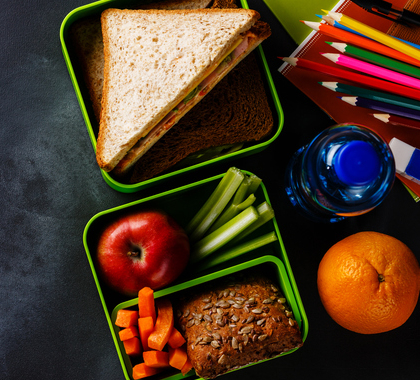Several dozen Alabama school districts are offering free lunches to all students this year. Economists have long claimed that “There’s no such thing as a free lunch!” Although I don’t think that Alabama schools have proven economists wrong, this case illustrates a challenge of limiting government.
School systems offering free lunches this year, according to the Alabama Department of Education, include Birmingham and Tuscaloosa city schools, and Mobile, Montgomery, Barbour and Crenshaw county schools. More than 4,000 schools nationally take advantage of the Community Eligibility Provision (CEP) of the Healthy, Hunger-Free Kids Act of 2010, funded by the U.S. Department of Agriculture (USDA). The CEP provides free lunches and breakfasts, long available to children from low income households, to all children in qualifying low-income schools regardless of family income.
Economists’ skepticism about free lunches flows from the most fundamental economic fact of our world, scarcity. Scarcity means that our wants and desires exceed our ability to satisfy them, or that we can’t have everything we want. Resources used for lunch cannot be used for other things.
Alabama’s school lunches are not free; they cost us as Federal taxpayers. They are better described as zero priced, as USDA funds let schools charge students a price of zero. The government cannot provide lunches or breakfasts – or college, healthcare, or any other good – for free, they can only pay the bill.
Even if not free, is the CEP good policy? Answering this involves two separate questions. The first is the wisdom of free lunches for children from low income families. The second is whether extending this to all students in low income schools makes sense.
Poor children have long received free school lunches. Educators (and citizens) realize that hungry children will learn less, defeating the purpose of public schooling. Charities and school PTAs began providing lunches in the early 1900s. States and the Federal government helped during the Great Depression. Congress passed the National School Lunch program in 1946.
School lunch programs also encourage healthy eating. One out of three American children today is overweight. Lunch programs let children eat at least one reasonably healthy meal each day.
But what about feeding children from well-to-do families? I can afford to feed my son, even though he attends a school which may be eligible for the CEP. Surely this is a waste of our tax dollars.
College football season is rapidly approaching, so I will borrow a “Not So Fast!” from Lee Corso. Providing free lunches for all students in low income schools offers some advantages. Parents must sign their children up for free or reduced-price lunches. The CEP keeps children from slipping through a crack and going hungry. Schools save the money reviewing applications and verifying income eligibility.
Furthermore, children who do not pay for lunch may be stigmatized. Whether recipients of government assistance should be stigmatized is a very divisive question. We can debate whether adults should be held accountable for their choices that perhaps contributed to being on government assistance. But stigmatizing children for the (potential) sins of their parents seems cruel.
Collecting money from children who still must pay is costly and problematic for schools. Should children without lunch or lunch money go hungry? If allowed to eat, the district may never collect the money owed. Aggressive collection efforts, like pinning notes to parents on the child’s school uniform, again impacts children far more than parents. But it’s hard to blame school administrators either. Paying for lunches for children whose parents can afford to pay strains tight budgets.
Fiscal conservatives sometimes suggest that government can be easily kept in check by cutting waste. The late William Niskanen, the long-time President of the Cato Institute, remarked that in all his decades in Washington, he never saw any budget line labeled “waste, fraud, and abuse.” Not paying for lunches for well-to-do kids might seem like a no-brainer. But controlling government spending almost always requires difficult choices.





